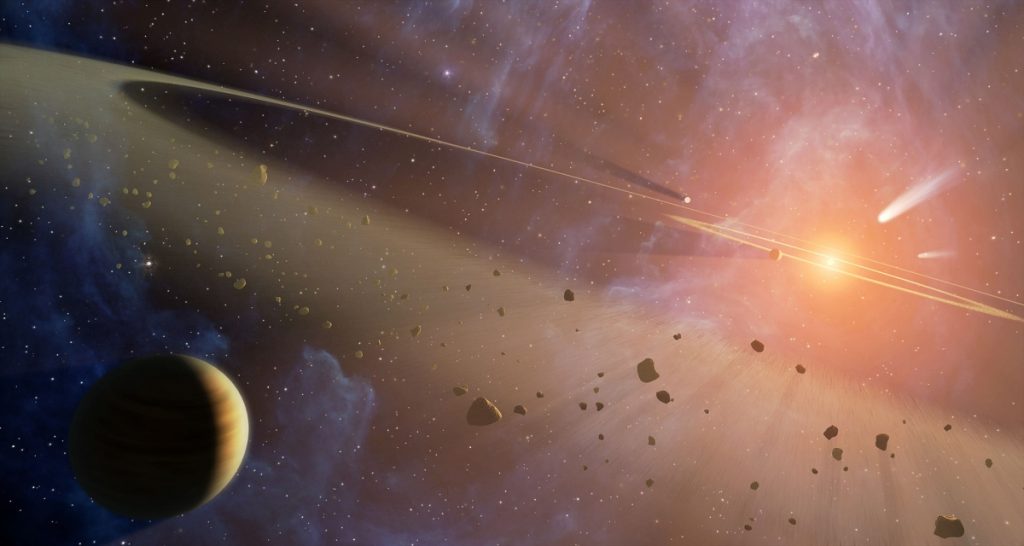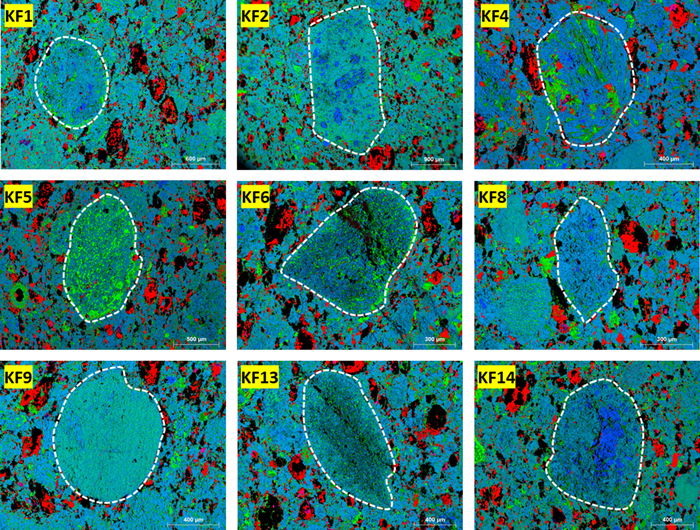At the origins of the Solar System, millimetre-sized crystals at the heart of certain meteorites
RETROSPECTIVE. Understanding the formation of our Earth and planets in general is one of the major scientific questions of our time. Chondrules, which are found in the core of certain meteorites, are also thought to be the building blocks of the telluric planets. In this study, IPGP researchers have used a new method to date these chondrules, thus lifting the veil a little more on the processes at the origin of our Solar System.

According to current models, the telluric planets in our Solar System formed more than 4.5 billion years ago through the accretion of rocky particles, which in turn formed increasingly massive bodies from collision to collision, giving rise to protoplanets, the embryos of the future planets we know today. But if this scenario is known in broad outline, certain stages are still unclear.
While the discovery of exoplanets with characteristics very different from those of our solar system opens up essential perspectives on the processes of planetary formation, it is the study of meteorites that today provides the main information on the cosmogony of our Solar System. Indeed, the meteorites found on Earth were formed throughout the early history of our Solar System, and are therefore interesting analogues of the different stages of planet formation.
Chondrites are particularly valuable in this respect, since not only are they among the most primitive objects in the Solar System, but they were formed from the same materials that formed our star and the surrounding planets. Moreover, chondrites are so-called ‘undifferentiated’, meaning that they have remained chemically stable since their formation over 4.5 billion years ago.
Chondrites are essentially made up of chondrules, submillimetre particles formed during the crystallization of silicate and metallic liquids in microgravity. It is therefore these chondrules that would also be at the origin of planetary embryos. The study of chondrules would therefore make it possible to strongly constrain planet formation models. However, the age and formation processes of planets have been the subject of debate within the scientific community for decades. It is indeed very difficult to make precise measurements on these materials, and particularly to give an age to these samples by isotopic dating methods.
In this study, the researchers succeeded in dating chondrules based on fine analyses of chromium isotope abundances. For this purpose, they focused on chondrules from a particularly rare type of chondrite, the enstatite chondrites, whose chemical composition is close to that of the Earth. The chondrules studied were extracted from a very slightly altered enstatite chondrite found in the Sahara. They were then analysed by a mass spectrometer to measure their chromium content for dating purposes. Results: these chondrules were formed 4.565 billion years ago, i.e. 1.6 million years after the formation of the first solids in the Solar System.

In addition, chromium isotope analysis identified, among the chondrules sampled, chondrules similar to those found in carbonaceous chondrites. However, these are not only older than the chondrites with an enstatite profile, but they also formed in the outer Solar System (which today corresponds to an orbit beyond that of Jupiter). This result suggests that the different types of chondrules formed at different times during the birth of the Solar System. But also that material from the early outer Solar System could have been integrated into the accretion process of planetary embryos.
References :
Zhu, Ke, Frédéric Moynier, Martin Schiller, et Martin Bizzarro. “Dating and Tracing the Origin of Enstatite Chondrite Chondrules with Cr Isotopes”. The Astrophysical Journal 894, no 2 (May 2020): L26. https://doi.org/10.3847/2041-8213/ab8dca
The LabEx UnivEarthS contributed to this research by funding the ex-Interface project “From dust to planets” (I6).
- 4.5 billions years ago, the Earth’s early atmosphere was similar to present Venus [1/10]
- Observing supernovae: neutrino detectors to the rescue [2/10]
- At the origins of the Solar System, millimetre-sized crystals at the heart of certain meteorites [3/10]
- Kinetic Inductance Detectors, a promising technology for precision astronomy [4/10]
- Light-speed seismology to prevent earthquakes [5/10]
- ATHENA, a technical challenge for the new generation of X-ray telescope [6/10]
- Dune fields, a key to understanding the climate of other “Earths” in the Solar System [7/10]
- SVOM/ECLAIRs space instrument will pave the way to a deeper understanding of ultra-long gamma-ray bursts [8/10]
- InSight/SEIS probes further into the heart of Mars [9/10]
- The search for dark matter compatible with the search for supernovae [10/10]
